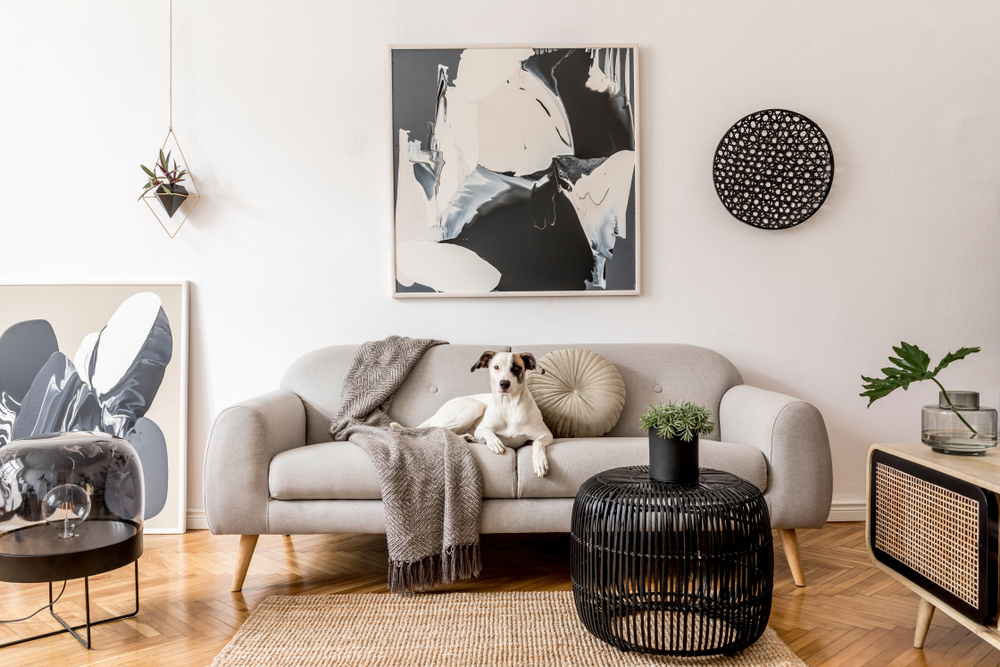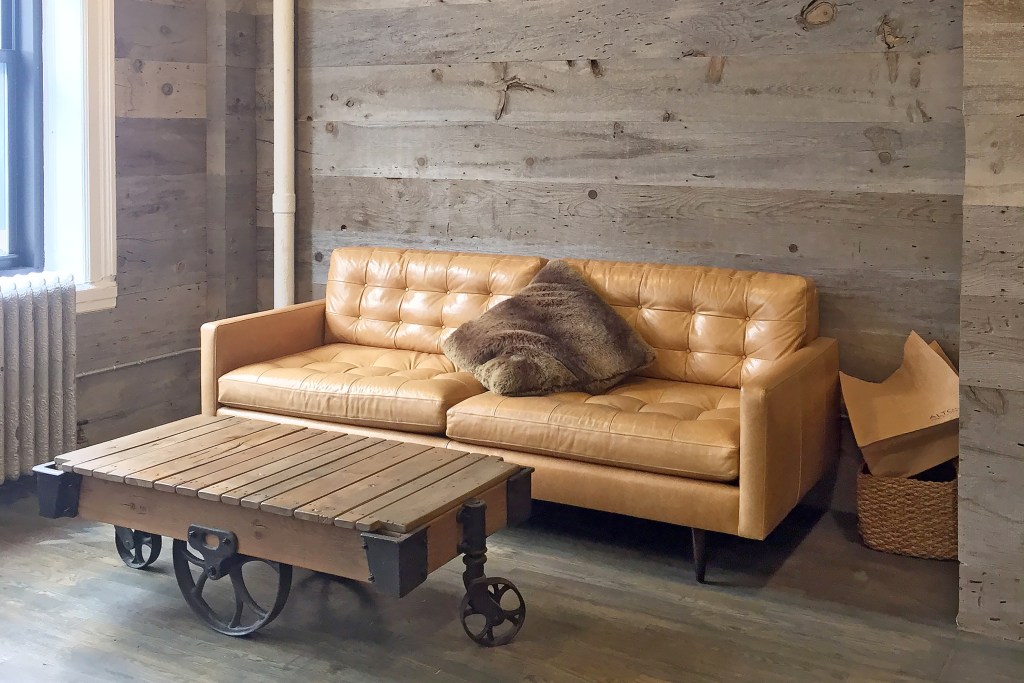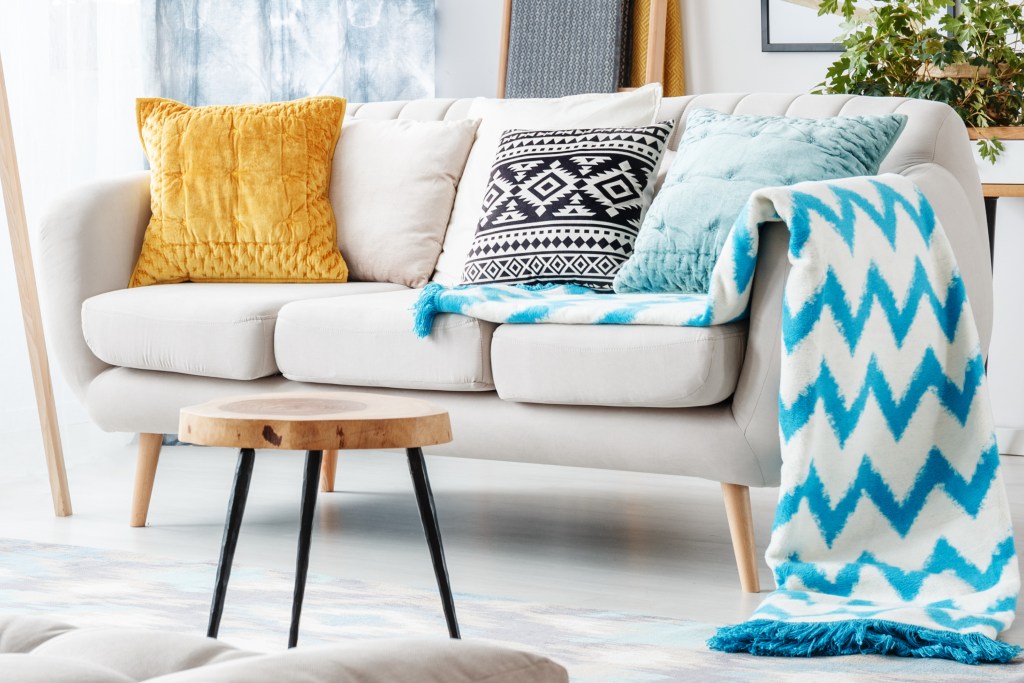If you’re in the market for a new couch or sofa, one of the biggest considerations beyond the size and shape is the couch fabric. Deciding on how you plan to use the couch and who you plan to let on it (for example, pets and kids) can help determine which material you choose. If it’s a sofa for a living room and one the whole family will use daily, you need couch material that’s durable and will hold up over time. If it’s one in an office or formal living room, you can be a bit more relaxed about the fabric.
Beyond the frame and springs, there are many fabric choices available when it comes to buying a couch. Here are a few things to watch out for and consider before making your big purchase. They can make the difference between a couch that stands the test of time and one that needs to be replaced after a couple of years.

The best couch material for everyday use
If you’re planning to use your new couch every day, choose a material that’s not only durable but easy to clean. Cotton and wool will hold up the best over time. However, while they can both be pre-treated for stain resistance, they aren’t the easiest when it comes to removing tough stains or smells (like with pets).
Synthetic microfiber, which is manmade versus natural fibers like cotton and wool, is stain resistant and also won’t pill, wrinkle, or fade. Materials in this category include vinyl, nylon, and polyester. These blends make the most sense in a room that’s used daily. As with any fabric, make sure you know exactly how to clean it, so you are using the right products that won’t damage or discolor your couch.

The best couch material for rarely used couches
If you plan to purchase a sofa for a formal living room, library, or home office and know it won’t get used a ton, you can be a little more flexible in the fabric you choose.
- Linen is a gorgeous natural material, but it stains and wrinkles easily, so it’s ideal only for a low-traffic room.
- Silk is another natural fiber that looks stunning on a couch but stains and tears easily and has to be professionally cleaned.

The best material for pets and kids
Leather, also a natural fiber, is the strongest of couch materials but also the most expensive. If you have pets or kids, it may be worth the investment, as leather is easy to clean and stands up to stains, scratches, and lots of traffic. Even if your leather does scratch from pet paws, most of the time they can be buffed out. If you’re worried about this, you can also look for a distressed leather couch that will hide scratches more easily.
Leather isn’t as versatile when it comes to patterns or colors, so you’ll have to bring those in with other textiles like blankets, throw pillows, or curtains. Despite this fact, leather looks grand and rich in any space and holds up well over time.
Synthetic fibers like olefin, acrylic, rayon, and nylon also hold up well against stains and scratches from your pets and kids. Finally, patterned fabrics will hide pet hair more easily.

The best couch for a long life
Surprisingly, leather ranks up there with the most durable if you plan for your investment to last for many years in the future. If leather isn’t your thing, you can also look for couches that are made from synthetic microfiber, because the fabric is tightly woven and adds protection from spills and dust. Finally, canvas is also highly durable and will last for years, which is why most outdoor furniture is made from canvas.

The best couch for sleeping
If you want to do some serious lounging, there are some larger couches that allow you to snooze, watch movies, and have a Netflix marathon in the comfort of your own home. We love lounging couches because they are soft and oversized, and they give you space to put your feet up with family, friends, or pets all around you. This one from Crate and Barrel is a lounger with a double chaise that is ideal because everyone on it has the ability to lounge or nap to their heart’s content.

Do your research
Whatever couch you select, make sure you do your homework in advance. Couches aren’t cheap, and you want to protect your investment by knowing what to expect when it comes to cleaning, wear and tear, fading, and scratching. If not, you’ll be disappointed with how your couch looks relatively quickly. If possible, go into a store and touch and sit on couches made with different materials so you know firsthand how they will look and feel in your home.
It can be tempting to buy online, and if you do your homework and know exactly what you’re getting, it’s a relatively pain-free process. But if you order based only on how a fabric looks without knowing the pros and cons, you’ll likely not be happy in the end (ask us how we know). This not only applies to the material but the frame, springs, stuffing, and exact size for your room.
It’s also important to know yourself. If you aren’t good at cleaning and constant upkeep, don’t pick a material like linen that will require it. If you swear that the dogs won’t be on the furniture, ask yourself how long that rule will realistically apply. The best material is one you will feel comfortable maintaining over time, so do yourself a favor and pick one that meets the demands of your life as it is.




